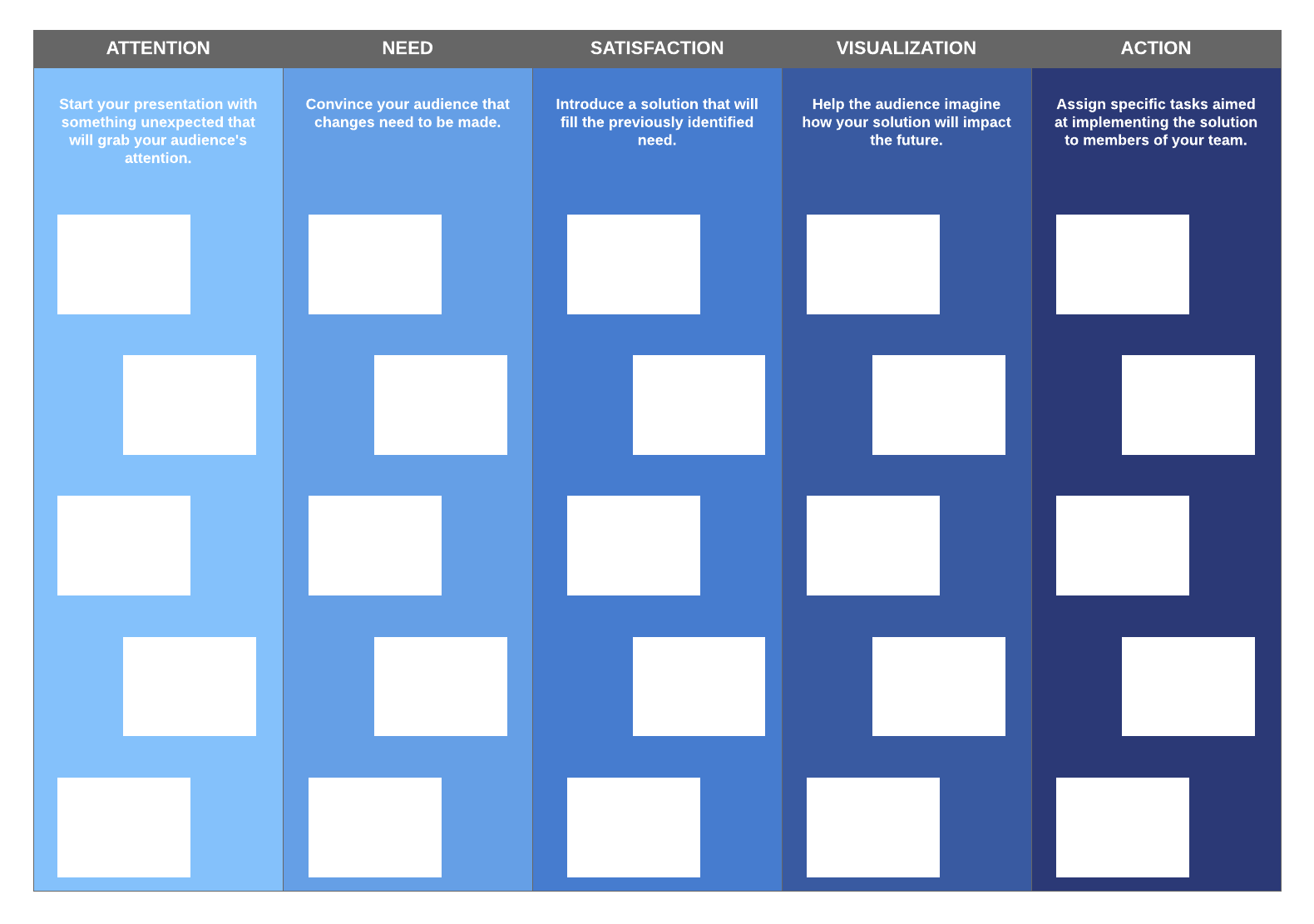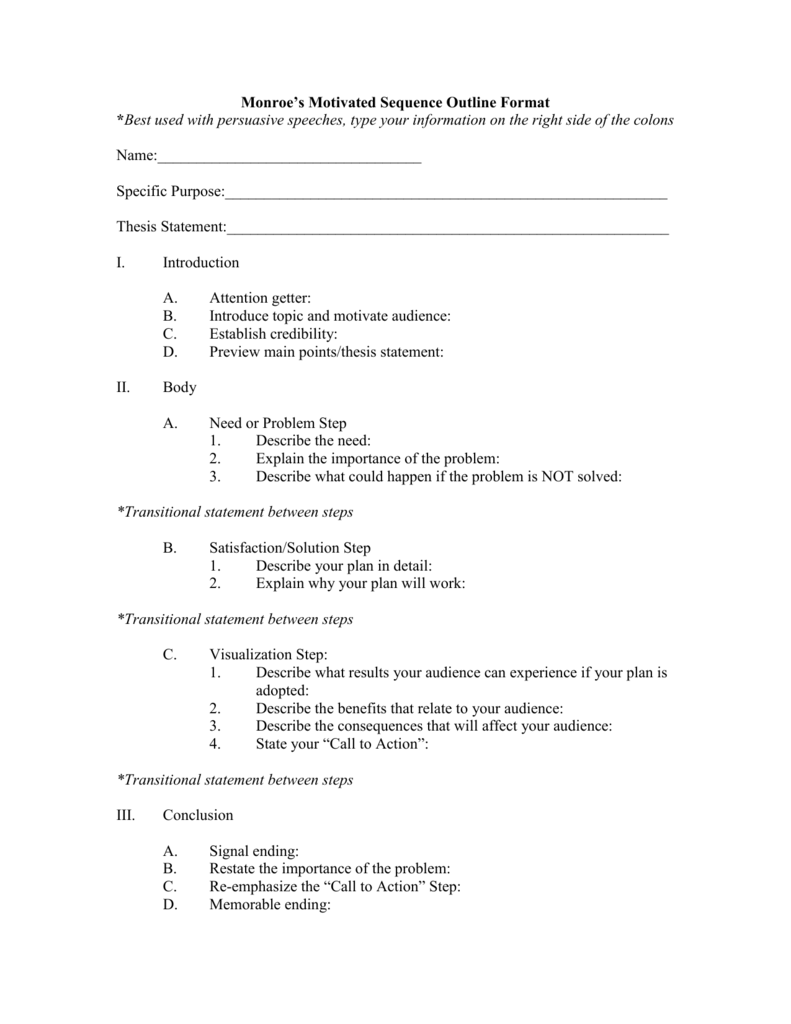
Monroe calls this link between your solution and the need a theoretical demonstration because you cannot prove that your solution will work. Third, you need to show how the solution you have proposed meets the need or problem. Instead, you really need to provide a solid argument for why they should accept your proposed solution. Just telling your audience they should do something isn’t strong enough to actually get them to change. Second, you want to make sure that you clearly explain to your audience why they should accept the attitude, value, belief, or action you proposed. The purpose of this statement is to clearly tell your audience what your ultimate goal is. Within this step, Monroe (1935) proposed a five-step plan for satisfying a need:įirst, you need to clearly state the attitude, value, belief, or action you want your audience to accept. In the third step of Monroe’s motivated sequence, the satisfaction step, the speaker sets out to satisfy the need or solve the problem. At the same time, research does support that organized messages are perceived as more persuasive as a whole, so using Monroe’s motivated sequence to think through one’s persuasive argument could still be very beneficial.īelow are the basic steps of Monroe’s motivated sequence and the subsequent reaction a speaker desires from his or her audience. We wanted to add this sidenote because we don’t want you to think that Monroe’s motivated sequence is a kind of magic persuasive bullet the research simply doesn’t support this notion. In the only study conducted experimentally examining Monroe’s motivated sequence, the researchers did not find the method more persuasive but did note that audience members found the pattern more organized than other methods (Micciche, Pryor, & Butler, 2000). Thus far, almost no research has been conducted that has demonstrated that Monroe’s motivated sequence is any more persuasive than other structural patterns.


While Monroe’s motivated sequence is commonly discussed in most public speaking textbooks, we do want to provide one minor caution.

The purpose of Monroe’s motivated sequence is to help speakers “sequence supporting materials and motivational appeals to form a useful organizational pattern for speeches as a whole” (German et al., 2010). One of the most commonly cited and discussed organizational patterns for persuasive speeches is Alan H.


 0 kommentar(er)
0 kommentar(er)
